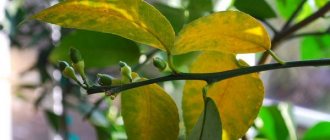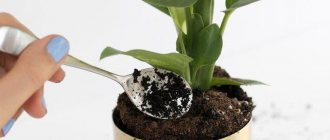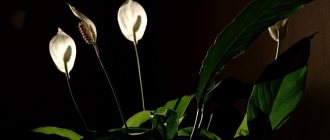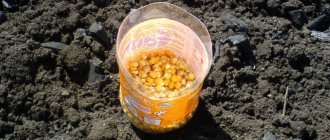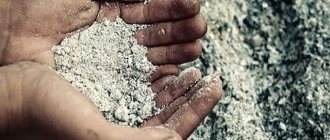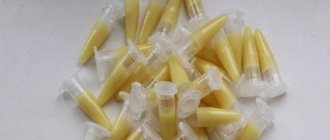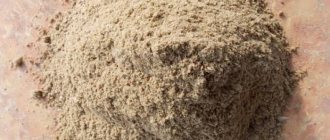Category: Organic fertilizers Reading time: 9 min · Views: 1,853
Ash is a natural fertilizer for home and garden plants, as it contains many useful microelements. But you can also use cigarette ash as fertilizer, because it is formed from burning tobacco leaves. Ash, or ash, helps reduce soil acidity and increases plant resistance to many diseases. Let's consider all the ways to use ashes in a summer cottage, in a greenhouse and for caring for indoor plants.
Volcanic ash is an excellent fertilizer
Every year, all the earth's volcanoes emit approximately 2.6 million tons of ash. People have adapted to use it for various purposes, including as fertilizer. Volcanic ash is an excellent fertilizer; it contains a huge amount of bioactive microelements necessary for plants. Fresh ashes contain a lot of mobile phosphates and potassium, which causes an outbreak of fertility. In places where volcanic eruptions occurred, the soil is 3–4 times more fertile than other places on earth.
The by-product of volcanic activity includes elements that are very useful for plants in the form of iron and magnesium compounds. That is, after “ashy” precipitation falls, an ordinary area increases the return by 3-4 times! In addition, small ash particles containing silicates simply “suffocate” harmful insects, which also helps to increase productivity.
Good fertilizer for indoor flowers. How to choose?
Every plant lover, if he is a beginner, is stuck with the question of which bait to choose. As we wrote above, you can go to the nearest store and purchase a ready-made complex, but you can make it simpler and save money. We are talking about homemade fertilizers for indoor flowers.
Haven't you heard of these? We'll tell you. If you didn’t know, you can fertilize your indoor flowers with preparations that everyone has at home. There are at least two advantages here:
- monetary savings;
- environmentally friendly complementary foods.
So, next we will tell you about how to make fertilizer for flowers. There is nothing complicated here. People used such fertilizers in past centuries, so in our time it is not difficult to find the material at home.
Wood Ash Fertilizer
Wood ash contains a lot of potassium, phosphorus and calcium. Magnesium, iron, sulfur and zinc are also present in the composition, albeit in smaller quantities. Depending on the quality of the soil on the site, you can change the composition of such fertilizer. Deciduous wood will produce a fertilizer high in potassium, while coniferous trees are rich in phosphorus. The richest fertilizer in microelements is obtained through the combustion of cereal straw, sunflower stems, and potato tops.
This fertilizer can be applied dry when planting; this can be done in several ways:
- When digging the soil, add wood ash at the rate of 300 grams per 1 square meter. meter (clayey soils are prepared in the fall, and peat and sandy loam soils in the spring);
- Ashes are mixed with soil, which avoids burns to the root system and stimulates good plant growth. For small plants, 2 tbsp is enough. spoons per hole, and for trees, large shrubs and grapes you can add up to 2 kg per hole;
- You can powder the leaves of the plant with the dry substance, which will help prevent pest attacks.
It is important to know! There are 2 grams in one teaspoon, 6 grams in a tablespoon, and 100 grams of ash in a 200 gram glass.
You can also use an infusion of wood ash as a fertilizer for flowers; the ash infusion has good nutritional, protective and preventive properties; the solution is prepared in different ways, depending on the purpose for which it will be used:
- To deoxidize and fertilize the soil, 150 grams of ash are dissolved in 10 liters of water, mixed thoroughly and watered;
- 1 tablespoon is diluted in a liter of boiling water, mixed well and placed in a dark place for a week, shaken every day.
Houseplants and flowers in the flower bed are periodically watered with ash infusion; fertilizing makes them stronger and more resistant to diseases.
You should not use fertilizer from wood ash if nitrogen fertilizer has been added to the soil, the soil pH is above 7 and cabbage or beans will be planted on the site; these plants prefer acidic soils.
Phosphate and nitrogen-containing fertilizers should not be added along with ashes, as this leads to excessive release of ammonia, which is harmful to plants.
Beneficial features
What is the difference between ash and ashes? Ash is the name given to plant components burned to a powder state; ash contains larger fractions. However, ash can quickly turn into ash if ground to a powder. At a summer cottage, ash is made from fallen leaves and straw, trimmed tree branches, bark and tops after harvesting. The cooled powder is placed in a container and stored until next spring.
An important disadvantage of ash (ash) is the complete absence of nitrogenous substances. However, it is very high in calcium and potassium.
Potassium is a very important micronutrient for plant health. A deficiency of this microelement can be noticed by the condition of the leaves: first, brown spots appear on them, and then they dry out at the edges. As a result, the affected leaves completely fall off, as they cannot provide photosynthesis. This also applies to house flowers, which instantly lose their decorative effect.
An important benefit of using ashes in the garden is to attract earthworms. They crawl to eat organic residues, and as a result, they qualitatively loosen the soil and enrich it with the products of their vital activity.
Crops grown using natural fertilizers are much tastier and healthier.
Ash is useful for clay and loamy soils, as it structures and loosens dense soil. Attracted by the ash, earthworms complete the structuring by loosening and enriching the soil with organic secretions. Regular use of powder from burnt leaves and tree bark makes an infertile plot of land suitable for growing crops.
The ash after burning leaves contains no more than 30% potassium and a small amount of phosphorus and calcium. To obtain fertilizer from foliage, hazel, grapes, potato tops and fruit trees are used.
The ash after burning wood contains a large amount of calcium and potassium compounds. This fertilizer is well suited for feeding fruit trees, vegetable crops and ornamental plants.
Using cigarette ash for fertilizer purposes
You can feed indoor flowers with cigarette ash by adding a small amount of the substance to the surface of the soil in a pot. This fertilizer not only acts as a top dressing, but also protects plants from insect pests and some diseases.
You can use an infusion of cigarette ash as an indispensable remedy for aphids; to do this, dilute 1 tablespoon of ash in 5 tablespoons of water. You need to insist for at least three days, then 1 teaspoon of the mixture is diluted in a liter of water and sprayed on indoor plants. After 8 hours, you need to spray the flowers with clean, settled water so that the leaves do not get burned and get rid of the unpleasant odor.
In what cases should flowers not be treated with ash?
It is not recommended to fertilize indoor flowers that love acidic soil with ash (anthurium, azalea, indoor cypress), since ash tends to reduce acidity.
In addition, you cannot use ash for fertilizing:
- for plant diseases with interveinal chlorosis;
- if there is an excess of potassium in the soil;
- earlier than 3 weeks have passed after fertilizing with nitrogen preparations.
Carbamide, manure and saltpeter, as well as nitrogen-phosphate mineral fertilizers, should not be used simultaneously with ashes.
Source: glav-dacha.ru
Tobacco dust and ash - a medicine for the flower garden and garden
Greenhouses, greenhouses, rose gardens and flower beds are susceptible to attack by such a dangerous pest as spider mites. This insect breeds very quickly, especially in enclosed spaces, but it is not easy to remove. A very effective remedy is to fumigate plants with smoldering tobacco dust.
About 100 grams of tobacco dust are poured into an iron bucket and set on fire; it does not burn quickly, but gradually smolders. A bucket of smoldering dust is left overnight in a greenhouse or conservatory, with the door tightly closed. This procedure must be repeated three times during the week.
The resulting tobacco ash is not thrown away, but is used as a fertilizer because tobacco ash contains all the important elements for maintaining the beauty and health of the flowers in the flowerbed.
The easiest way is to evenly embed the ash into the soil of the flower garden to a depth of at least 10 cm, but it is better to fertilize with a three-day infusion of tobacco ash in a ratio of 10 g per liter of water, watering it at the roots of the plants.
To spray on the leaves, use a solution of 20 g per liter of water; it is better to spray early in the morning or in the evening. If sprayed during the day under the scorching rays of the sun, the leaves are at risk of burns.
In the same way, you can fertilize indoor plants, but you must strictly observe the proportions due to the limited space of the container in which the flower is planted.
Ash composition
Before analyzing the composition of burnt organic residues, you need to know the difference between the concepts of ash and ash. In essence, they are the same substance. It is generally accepted that ash is a smaller fraction, and ash has large particles. But it can be crushed and then the ash will also become ash.
Different types of wood, leaves, straw, manure or droppings - all of these substances produce different ratios of nutrients when burned. No one will deliberately burn oak wood, even if it is very rich in calcium - up to 40%. If trimmings, dry leaves, and bark accumulate on the estate, it is most often burned.
Any ash as a fertilizer has one drawback: it does not contain nitrogen - it all evaporates during combustion. The main advantage is a lot of potassium and calcium, as well as microelements that plants need to protect against diseases, proper growth and development. In total, the ash fertilizer contains more than 70 microelements.
Adding ash to the soil causes alkalization, so it is necessary to observe the dosage of the substance per square meter. By the appearance of the plants, you can determine when it is necessary to feed them with an ash solution.
With a lack of potassium, the leaves begin to dry out at the edges and spots appear. The same can happen with indoor flowers, if they have not set buds, then potassium starvation is obvious.
Ash after burning leaves
Leaf ash contains about 30% potassium. There is less calcium, even less phosphorus. The substance is finely dispersed, dissolves well in water, quickly releasing nutrients into the solution. Reduces soil acidity, but is not recommended for plants that prefer acidic soil.
Ash protection against diseases and pests
All gardeners know that in order to achieve excellent results they have to constantly fight pests and protect plants from many diseases. Any ashes of organic origin will be useful in this difficult task.
Slugs and snails are pests, from which even chemicals often cannot save you; you need to powder the ground around the bushes with ashes and they will stop bothering you, so you can get rid of ants by sprinkling ash on their paths.
You can mix tobacco and ash dust in equal proportions and sprinkle this mixture on plants susceptible to attack by cruciferous flea beetles; this indispensable remedy always works.
To combat gray mold and powdery mildew, use a solution of 300 grams of ash in 3 liters of water, which must be heated, but not boiled, after 5 hours the volume of the solution is increased to 10 liters, a little soap is added and the plants are treated with this composition. For a good result, double treatment is required with an interval of 2 weeks.
Ash fertilizers are a natural product that balances the basic nutrients needed by all plants. Ash improves the structure of the soil, protects against pests and various diseases, moreover, this product does not require any costs and is available to any gardener.
